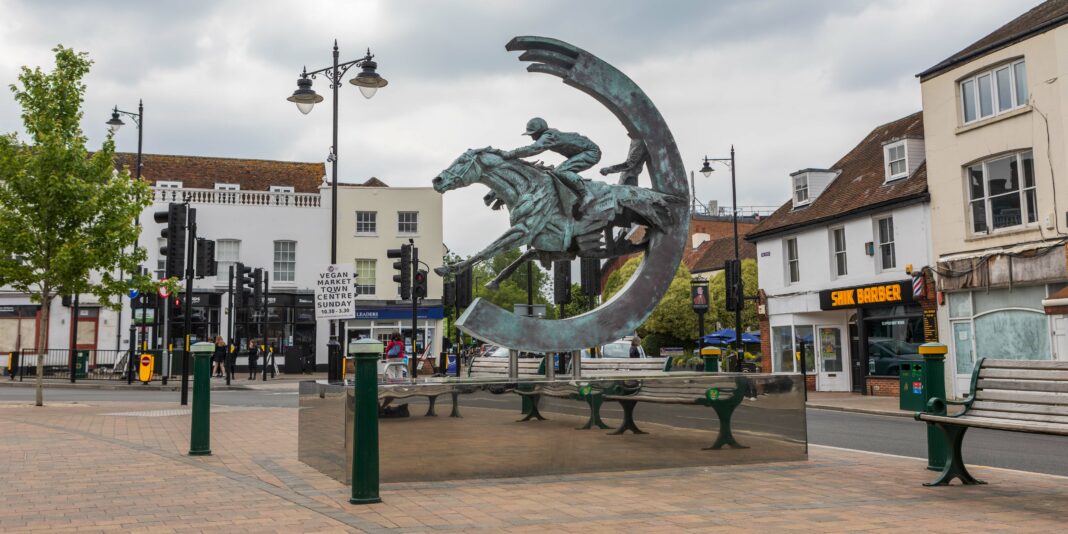In 2023 we’re celebrating Food & Dining Magazine’s 20th birthday. Our forthcoming quarterly print edition will go into greater detail about this anniversary, but in the meantime, consider that our F&D website came later.
Owner, publisher and chief bottle washer John Carlos White published the first-ever web site post on January 1, 2012.
As of this morning (16 April), there have been 3,424 posts at the web site, 1,301 of which I’ve authored since coming aboard as digital editor in June of 2019.
But only 26 of them have been about the Kentucky Derby, counting today’s. That’s 1%, although only if we round up from .0075, and I can’t decide if this percentage is meaningful or not. Either way, we certainly can’t be accused of being front runners.
Good, bad or indifferent, the Kentucky Derby is Louisville’s signature annual event. The same might be said of Oktoberfest in Munich, Rio de Janeiro’s Carnival, or the Gilroy (CA) Garlic Festival.
The difference, however, is that we take the greatest two minutes in sports and make it last somewhere between two weeks and six months.
This morning it occurred to me to bone up on the English roots of this whole “Derby” thing. While I’m less of an Anglophile than an all-purpose aficionado of Europe in a broader sense, Horace Rumpole is a preferred attorney, and a pint of Best Bitter my tipple of choice.
The Baylor family ancestry is 75% confined to the United Kingdom, and the missus holds a British passport. Perhaps some day we can retire to her mother’s native Plymouth, where Argyle currently rest atop Football League One, and visit the carvery each Sunday in perpetuity.
Arriving at long last to the point, whereas the Earl of Sandwich’s place in culinary history is likely discredited, and his amorous entanglements far more entertaining, there is little doubt that the 12th Earl of Derby (Lord Stanley) was an influential figure in the evolution of horse racing.
The first horse race called a Derby was named after an English nobleman named Edward Stanley, the Earl of Derby (1752–1834). The Earl instituted the race in 1780, and it continues to be run to the present day on the first Wednesday in June at Epsom Downs, a racetrack south of London. The name Derby has become attached to other races usually restricted to three-year-old horses, such as the Kentucky Derby.
Epsom “is a town in the Borough of Epsom and Ewell in Surrey, England, about 13.5 miles (22 kilometres) south of central London.” An older generation susceptible to aching muscles will find “Epsom” a familiar name.
Several tributaries of the Hogsmill River rise in the town and in the 17th and early 18th centuries, the spring on Epsom Common was believed to have healing qualities. The mineral waters were found to be rich in Epsom salts, which were later identified as magnesium sulphate.
The Cleveland Clinic describes Epsom salt as “is one of many naturally occurring mineral salts, a compound of magnesium and sulfate in rock-like formations.” In case you’re wondering (it was my first question), Epsom salts aren’t an impediment to brewing.
Epsom salts can be used to add a sulfate “crispness” to the beer that will increase hop bitterness levels. Epsom is used to add sulfate and magnesium ions to brewing water. It is often used at half the levels of gypsum.
Homebrewers, take note.
This said, Epsom and its immediate environs seem not to have been of critical importance in the history of English ale making; however, a quick scan of the Campaign for Real Ale Pub Guide reveals ample real ale (cask-conditioned) dispensaries in the city and vicinity. What I’d give for a gently carbonated Ordinary at precisely this moment.
As for traditional and characteristic Epsom Derby edibles, I’m guessing they differ little from the English norm (as colonially varied), this being a topic I’ll be returning to in a forthcoming Hip Hops column. Thankfully, Local Food Surrey offers a comprehensive survey of the current culinary scene.
As we embrace a relaxed canter toward the finish, any tale of two Derby races must include some mention of headgear, with this advisory: “The American term for a Bowler Hat (is) mis-pronounced by Americans as ‘Durby’ rather than the British version ‘Darby.” We’ll begin with the men.
In the late 19th and early 20th centuries, many stylish gentlemen attending the Epsom Derby wore hard felt hats with a rounded crown and rolled brim designed in 1849 by London hat-makers Thomas and William Bowler – hence the British name, Bowler Hat (UK). Americans came to associate the hats with the races and so the American term of Derby Hat came into use.
Of course in Louisville, the Kentucky Derby’s fame encourages abundant fashion creativity for women, “so, how did this famous tradition get started and what made it so big that even Queen Elizabeth II donned one when she attended?”
“When women got dressed up, especially when they were going to church and formal events, the woman’s crowning glory was the hat. In the South, women pride themselves on being Southern belles so wearing a hat to the Derby plays off of that.”
In 2023, the 149th Kentucky Derby takes place on Saturday, May 6, and Epsom Derby’s 244th running will occur a month later on June 3. Louisville and Epsom are 4,042 miles apart, but there are historical links between the two races.
Only two horses have ever run in both the Kentucky Derby and Epsom Derby. Bold Arrangement finished second in the 1986 Kentucky Derby but only 14th at Epsom. In 1992 Dr Devious finished seventh at Churchill Downs before rebounding to win the original Derby by two lengths.

























